Sorry, Alan Moore, Watchmen is just another franchise. The 1986 comic book series erupted onto the scene, revolutionized the medium, and stewed as an impossible adaptation for decades. Then came Zack Snyder’s film and a seemingly bottomless hunger to continue and explore the universe Moore co-created alongside illustrator Dave Gibbons. The author may no longer want anything to do with the work-for-hire job that took on a life of its own, but we’re screaming for seconds, thirds, and fourths.
Damon Lindelof‘s Watchmen series for HBO initially sounded like an absurd idea. A sequel show? No way that can be any good. Three episodes in, and we’re obsessed. Moore’s name is nowhere to be found on it, but his text thrives in every frame. The only problem? The week-to-week drip leaves us salivating. We’re begging for more Watchmen, and thankfully, there are many comics, and even one proper nonfiction tome, to tide us over while we wait. Go grab that pen and pencil; there’s another reading list to put together.
![]()
Watchmen

Well, you have to start here, right? Moore and Gibbons’ historic graphic novel began its life as a deconstruction of the Charlton Comics characters purchased by DC Comics in 1983. However, once editorial read Moore’s proposed story and uncovered how his narrative would render characters like Captain Atom and Thunderbolt unusable for future publications, they demanded that the writer concoct brand new characters for the series. Goodbye The Question, hello Rorschach. Step aside Blue Beetle, meet Nite Owl. Free from branding, the writer could viciously savage superhero archetypes as well as the Margaret Thatcher/Ronald Reagan era.
Thirty-three years removed from its publication, it’s hard to imagine today the impact the comic had on the industry. In combination with Frank Miller and Klaus Janson’s The Dark Knight Returns, also published in 1986, Watchmen kicked down the doors of the mainstream, and a flood of new readers came rushing into the market. People who once turned their noses up at the medium were now buying multiple copies of the book. The industry would never be the same.
I would imagine that most people reading this article have already partaken in the original comic, but I would encourage those folks to revisit the book as they make their way through the HBO series. As I watch each episode, I have the book in my lap, and it’s a delight to press pause, flip through the pages, and discover an easter egg or two. Better yet, exposing thematic parallels and twists on the ideology set up by Moore and Gibbons.
Before Watchmen: Minutemen

In 2012, we were not ready for a sequel, especially considering Moore’s vocal disgust toward the Watchmen owners. DC Comics wanted to stir the waters and prepare audiences for the inevitable franchise tidal wave. With nine prequel mini-series, they dipped their toe into the shallow end of a massive IP ocean. Most of the comics were fair-to-garbage, but one in particular, stood out as a fascinating expansion of Watchmen‘s vigilante history.
Darwyn Cooke‘s Before Watchmen: Minutemen travels back to 1939 with the first appearance of Hooded Justice (seen on American Hero Story, the show within the show in HBO’s series), and tracks the celebrity culture that spawns from homefront heroism during World War II. The original Nite Owl, Hollis Mason, recounts the early days of the superhero game, detailing the routine terrors of daily life, the necessity for donning the mask, and the cold pain of purpose mutated into propaganda. Cooke’s style perfectly elevates the golly gee optimism of post-WWII America but also accomplishes a satisfying shock when things get nasty. You do not need to read any of the other Before Watchmen titles (although I do dig Cooke and Amanda Conner‘s Silk Spectre, and Jae Lee‘s Ozymandias art is stellar), but Minutemen adds a satisfying comprehension of the universe and provides an extra boost for salivating Watchmen junkies.
DC Universe: Rebirth # 1
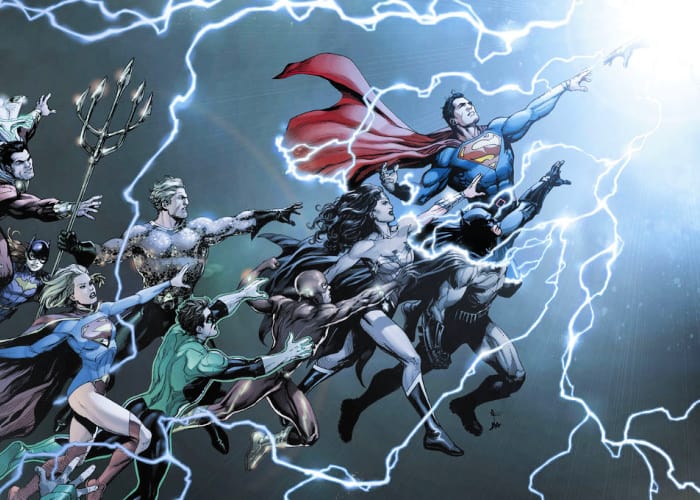
Until 2012, the characters of Watchmen and the greater DC Universe never clashed. Each stayed in their respective corners just the way the OG editorial wanted it. Then Snyder’s 2009 adaptation made a significant chunk of coin and sent the graphic novel skyrocketing back up the bestseller charts. DC wanted more. Not Moore. Just more.
Looking to close a chapter on their New 52 relaunch and kickstart a brand new one, DC Comics saw an opportunity to blame Doctor Manhattan for all the new number one issues fans would have to scarf up to stay up to date on their favorite characters. DC Universe: Rebirth #1, written by Geoff Johns and illustrated by Gary Frank, spends most of its time following a reality-displaced Wally West (a.k.a. The Flash number 3) as he desperately attempts to connect with fellow Justice League members. Wally informs the reader that an outside force is responsible for the timeline alterations plaguing DC Comics, and if the strict adherence to Watchmen‘s nine-panel grid format wasn’t already a big enough clue, the final pages of the comic expose the blue, nude god-being as the culprit. The genie is out of the bottle. There will be no going back.
The Button
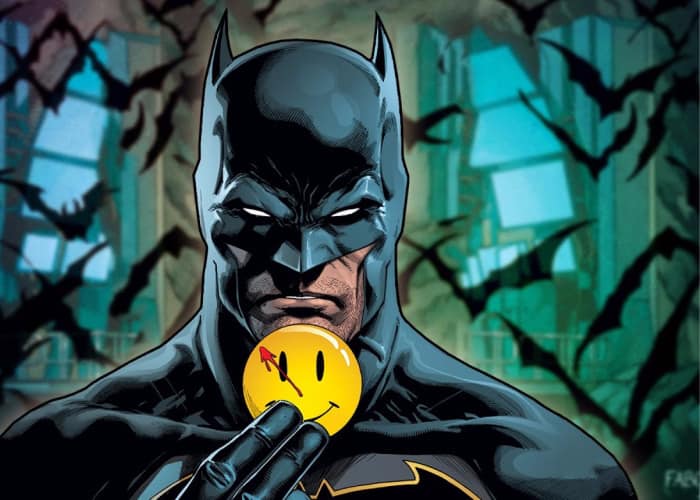
At the end of DC Universe: Rebirth #1, Batman spotted a shiny smiley face button jammed into the wall of his Batcave. Bruce Wayne is known to collect strange trinkets and memorabilia from his villainous confrontations, but he’s also a pretty fastidious guy. Every item has its place, and this smiley face was foreign to him. How’d it get there? Who does it belong to? He’s got to know.
Wanting to tease readers before they launched into a mega event, DC Comics halted Tom King and Joshua Williamson from telling their monthly Batman and Flash stories so they could sidetrack into this four-issue crossover mystery. The Caped Crusader and the Scarlet Speedster team up to investigate the button’s sudden appearance and accidentally trigger a doorway to another timestream where Bruce’s father took on the mantle of Batman and seriously lost his mind in the process. You know, even more so than our beloved Bruce. The comic does not resurrect The Comedian by the journey’s end, but it brings the reader a few steps closer to the barrier that separates these two comic book universes.
Doomsday Clock
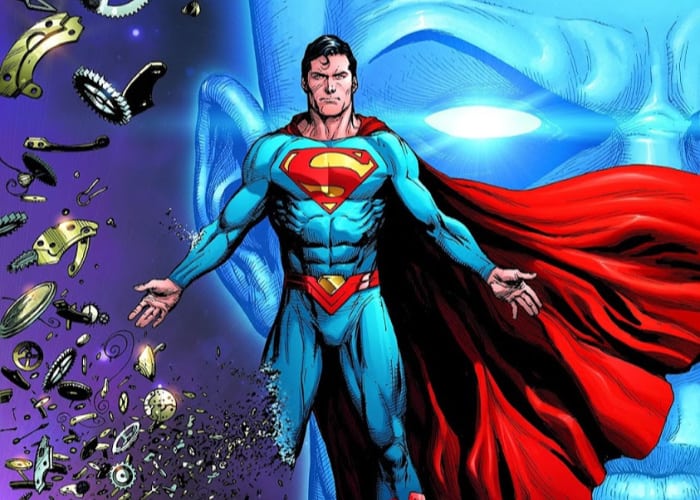
Two years in the making, and we’re still waiting for the final issue to publish in December. Doomsday Clock is the mad release we were promised at the end of DC Universe: Rebirth #1. I can’t say how we will all feel when we turn that final page, but I can tell you that the first 11 issues are incredibly compelling, severely blasphemous to Moore and Gibbons’ original vision, and destined to ignite arguments within the fan community for decades.
At the start of the story, the Watchmen universe and the DC Comics Universe are two totally different realities where the characters of the other are treated as fictional entertainments. Picking up seven years after the events of the squid attack on Manhattan, the fugitive Ozymandias gathers a squad of heroes to hunt down a missing Doctor Manhattan. In the other reality, a vast government conspiracy threatens to disclose the truth about metahumans: they are made, not born. Eventually, the characters of both realms come together, and their confrontation is about as weird as you would expect. What on Earth could the Joker possibly say to Rorschach? Oh yeah, there’s a new Rorschach since the last one was transformed into bloody ash.
Ultimate Wolverine vs. Hulk
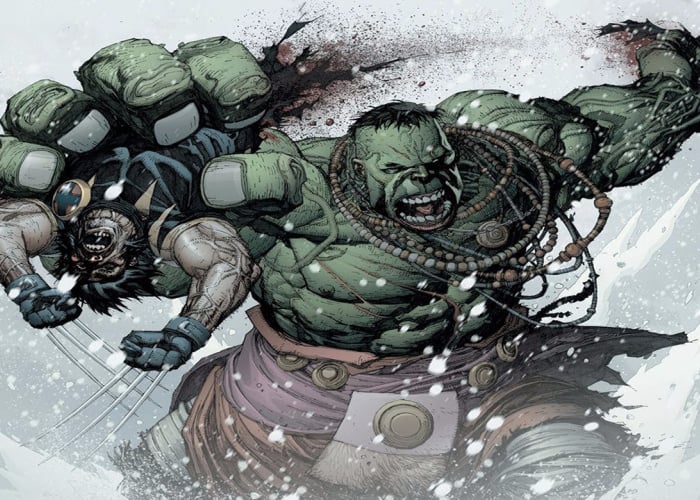
Back in 2005, while Lindelof was entrenched in Lost, Marvel invited the writer to take a crack at a classic battle royale: Wolverine versus Hulk. Looking to branch their multiverse into new realms with new creators, Marvel hoped to give a fresh spin on the classic brawl, which introduced lucky Logan way back when in The Incredible Hulk #180 – 183. The Ultimate Universe provided creators the opportunity to revise characters and narratives for a contemporary audience with a “realistic” perspective. We all love Wolverine. We all love Hulk. What would a genuine fight between such superpowered monsters look like? Spoiler: not pretty.
Decades removed from their creation and free of the Comics Code Authority, Lindelof was allowed to let loose with the violence. Ultimate Wolverine vs. Hulk took forever to finally reach the public, with Lost providing a nearly two-year distraction, but the final product is a vicious little beast that sends readers to giggle. Is it important comic book storytelling? Hell no, but it’s a raging blast of ‘roided machismo.
The Burning
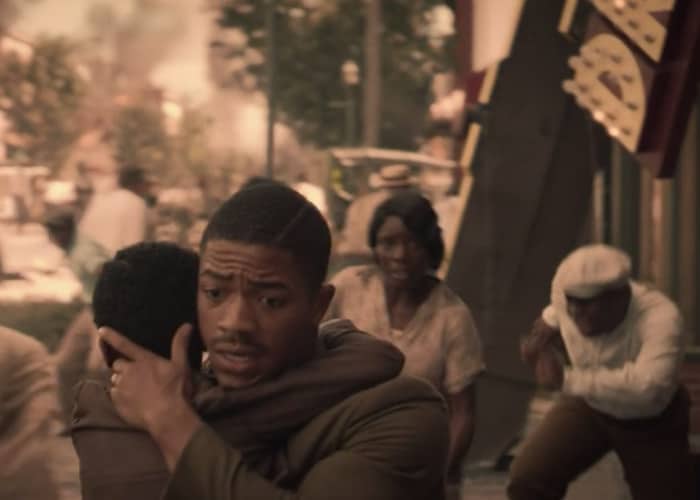
Moore and Gibbons were not producing comics fueled only by other comics, and Lindelof is not scripting his series strictly under the influence of their art. The original Watchmen looked to question the military industrialist complex of the 1980s (as well as many other political concerns of its creators), and the HBO series is primarily concerned with our nation’s cancerous systemic racism. As Lindelof states in the first episode of the Official Watchmen Podcast, when he was first approached to put his twist on the characters, he felt the story had to address prejudice and its traumatic effect on generations of people.
The first episode opens on the 1921 eradication of Tulsa’s Greenwood community by a fearful white mob looking to snuff out successful black businesses. Author Tim Matigan details this hateful barbarism in his book The Burning, a copy of which was passed out to many of the crew working on the series. The death toll of the race riot ranges between 100 and 300 individuals, but it came as new information to many viewers given that the event rarely made its way into public school history books. We have yet to see how this horrific atrocity will filter down into the present timeline of the series, but it’s clear that tragedy has tendrils and wraps itself across a family years after its inception. We can not fix such catastrophic pain in one lifetime.
The post The ‘Watchmen’ Reading List appeared first on Film School Rejects.


0 comments:
Post a Comment